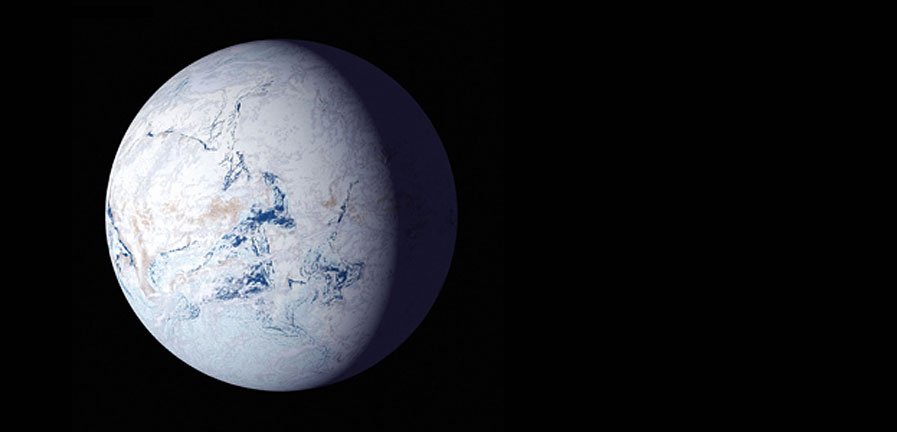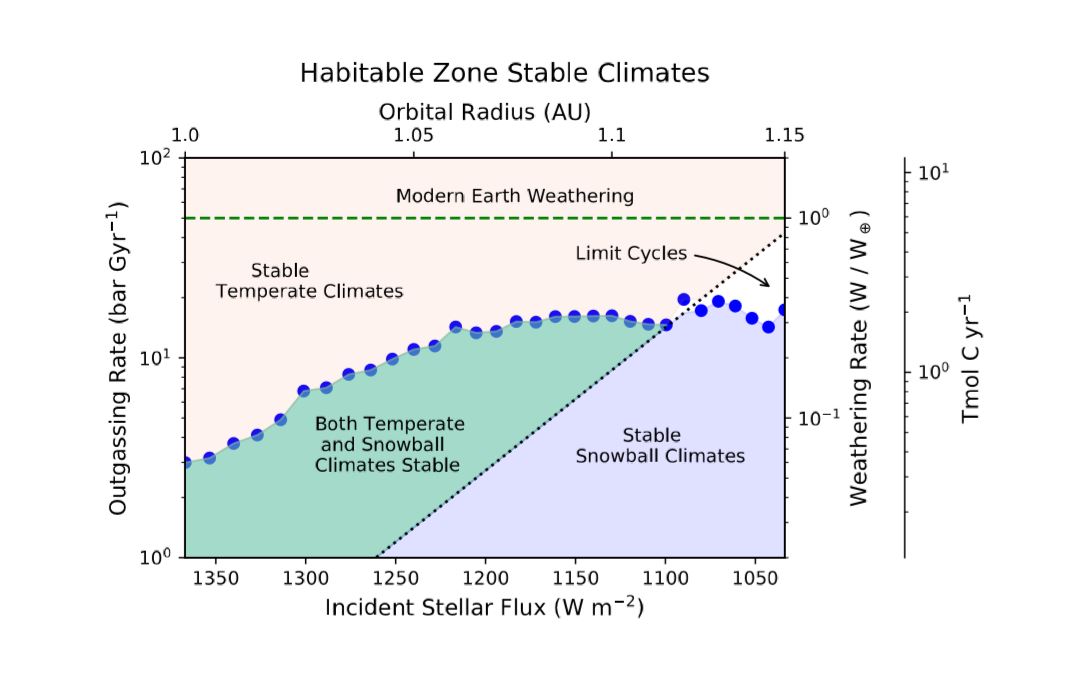
Frozen alien worlds might be capable of supporting a greater diversity and complexity of life than previously thought, a new study suggests.
Researchers already knew that life can persist on frigid "snowball" planets, which sport sea ice all the way down to their equators. After all, this happened on Earth, which has gone through several snowball phases during its long history.
"But all of our life was in our oceans at that time," study lead author Adiv Paradise, an astronomer and physicist at the University of Toronto, said in a statement. "There’s nothing about the land."
Related: How Habitable Zones Around Stars Work (Infographic)
The new study addresses this knowledge gap. Paradise and his colleagues performed thousands of 3D computer simulations, modeling the climates of theoretical snowball planets with a wide variety of continent configurations, stellar energy inputs and carbon-dioxide levels.
CO2 is a particularly important variable for modelers, since the concentration of this heat-trapping gas is one of the biggest climate drivers on a planet. We're seeing that on Earth today, where temperatures are rising at an alarming rate because we're pumping huge amounts of CO2 into the atmosphere.
When there's not enough CO2 in the air, on the other hand, a planet can go snowball. Rainfall and erosion can make this happen, geologists think: Water reacts with CO2, generating carbonic acid, which then reacts with rocks and gets bound up in minerals. These minerals eventually make their way to the ocean, where they're locked up on the seafloor.
Get the Space.com Newsletter
Breaking space news, the latest updates on rocket launches, skywatching events and more!

But this process doesn't necessarily exclude the possibility of terrestrial life, the researchers found. Some of their modeled snowball worlds featured patches of potentially habitable land — specifically, inland areas near the equator, which in some cases sported temperatures above 50 degrees Fahrenheit (10 degrees Celsius).
"You have these planets that traditionally you might consider not habitable, and this suggests that maybe they can be," Paradise said.
The team's work offers other insights about snowball worlds and planetary habitability as well. For example, volcanic eruptions can jolt a planet out of a snowball state, by blasting lots of CO2 and other greenhouse gases into the atmosphere. But this doesn't always happen, the new study suggests; the researchers' simulations found that erosion can balance out volcanoes' CO2 production.
So the distinction between worlds that can and can't support life as we know it probably isn't as clear as researchers had thought, study team members said.
"What we find is, actually, that line is a bit fuzzy," Paradise said.
The new study was published July 18 in the Journal of Geophysical Research: Planets.
- Brrr! Earth-Like Alien Planets Could Experience 'Snowball States'
- The Strangest Alien Planets (Gallery)
- Alien Planet Quiz: Are You an Exoplanet Expert?
Mike Wall's book about the search for alien life, "Out There" (Grand Central Publishing, 2018; illustrated by Karl Tate), is out now. Follow him on Twitter @michaeldwall. Follow us on Twitter @Spacedotcom or Facebook.
Join our Space Forums to keep talking space on the latest missions, night sky and more! And if you have a news tip, correction or comment, let us know at: community@space.com.

Michael Wall is a Senior Space Writer with Space.com and joined the team in 2010. He primarily covers exoplanets, spaceflight and military space, but has been known to dabble in the space art beat. His book about the search for alien life, "Out There," was published on Nov. 13, 2018. Before becoming a science writer, Michael worked as a herpetologist and wildlife biologist. He has a Ph.D. in evolutionary biology from the University of Sydney, Australia, a bachelor's degree from the University of Arizona, and a graduate certificate in science writing from the University of California, Santa Cruz. To find out what his latest project is, you can follow Michael on Twitter.









